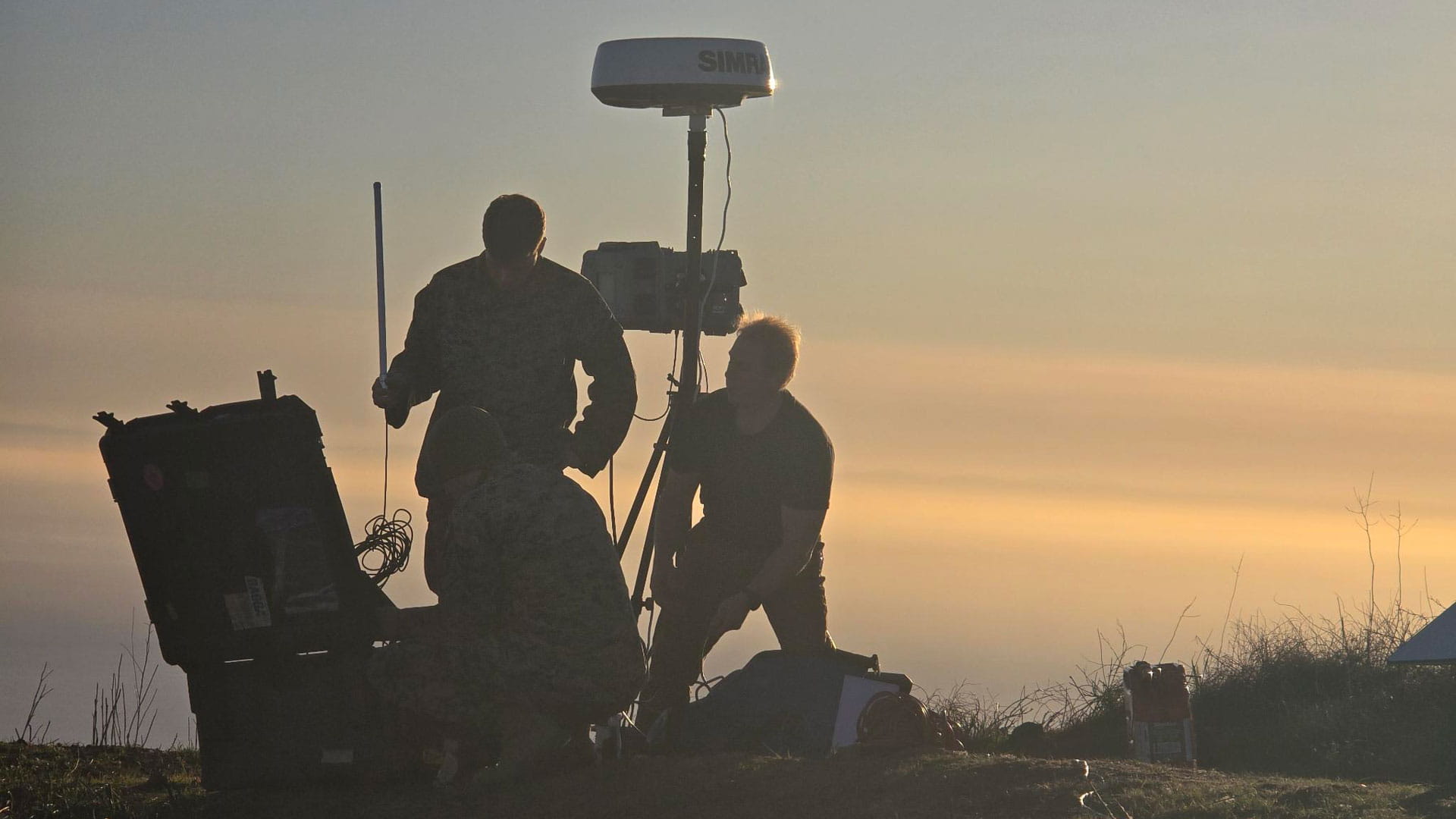A starring moment for the F-18
Raytheon Technologies puts the power behind the plane in Top Gun: Maverick
Top Gun: Maverick is more than just a long-awaited sequel to a beloved action film. It’s also a study of the F/A-18 Super Hornet, the fighter jet that takes the place of the F-14 Tomcat featured so prominently in the original.
Few companies know the F/A-18 as well as Raytheon Technologies, whose businesses provide it with precision weapons, radars, electronic warfare capability, avionics and other systems. And the company employs many former fighter pilots who know from experience what the aircraft can do.
“The F/A-18 is an awesome multirole aircraft that’s good at a lot of things,” said Brooks “Finch” Cleveland, a former U.S. Navy F/A-18 pilot and a senior aviation adviser for Raytheon Intelligence & Space, a Raytheon Technologies business. “It’s a jack of all trades and can conduct a variety of missions – air superiority, close air support, reconnaissance, fighter escort, day/night strike with precision-guided weapons, suppression of enemy air defenses, forward air control and maritime strike, among others.”
The plane’s pilots, he said, “must focus on a lot of different missions, which makes it exciting. You're not always doing the same thing.”
Here are some of the ways Cleveland and his colleagues across Raytheon Technologies help the F/A-18 and its crews accomplish their many missions.

“You can move the technology, the advanced weapons and systems on that airplane, to just about anybody’s doorstep”
Roy “Trigger” Kelley | Naval Power Requirements and Capabilities | Raytheon Missiles & Defense
Precision Weapons

An AMRAAM F3R missile is launched from an F/A-18F Super Hornet over the Point Mugu Sea Range during a test
Raytheon Missiles & Defense, a Raytheon Technologies business, works closely with the Navy and the Naval Air Station Fallon, home to the real-life TOPGUN fighter training school in Fallon, Nevada, to continually improve precision weapons carried on the F/A-18.
They include the AMRAAM missile, a medium-range weapon that has long been in the plane’s arsenal and is undergoing what’s known as an F3R, or form, fit and function refresh, to address new threats. Its integration with active electronically scanned radar – specifically, the AN/APG-79 radar made by Raytheon Intelligence & Space – has given it the ability to engage targets farther than crews can see.
“(The radar) can see almost everything out there – track it and pass on that information to the AMRAAM so that it can pick a target out of the sky,” said Roy “Trigger” Kelley, a former U.S. Navy F-18 pilot who now works for Raytheon Missiles & Defense.
Hardware and software updates like the Software Improvement Program-3 will also improve the weapon’s guidance, range and performance.
The StormBreaker smart weapon “takes the smart weapon capability to a new level,” Kelley said. It can see through dust, fog, smoke and rain and glide more than 45 miles to strike moving targets on land or at sea. The Super Hornet will be the second fighter jet to add the network-enabled weapon when it reaches initial operating capability.
The AIM-9X SIDEWINDER missile is a favorite of fighter pilots like Kelley because it's what they call a “fire-and-forget” weapon. They can launch it from afar and let the seeker do the rest.
“The SIDEWINDER provides the Super Hornet with a dogfight … short-range weapons that compliment onboard sensors’ queuing systems to make a lethal combination for would-be foes,” Kelley said. “The ability to be so flexible in an air combat maneuver environment is truly impressive.”
The latest variant features upgrades including a redesigned fuze and a digital ignition device that allows better ground handling and in-flight safety.

Sailors remove an AIM-9X Sidewinder air-to-air missile from an F/A-18F Super Hornet on the flight deck of the of the Navy’s only forward-deployed aircraft carrier, USS Ronald Reagan (CVN 76). (Photo: U.S. Navy)
Kelley flew from aircraft carriers in unusual places and in harsh weather, so he understands the importance of having robust precision weapons ready to go – day or night and in any weather conditions.
“We can put a precision weapon through any type of weather and not be concerned about whether we can see the target or if the target is moving,” Kelley said. “It’s taken us to a new level of air dominance.”
Radars and sensors

Two Raytheon Intelligence & Space technicians install the APG-79(V)4 radar into the nose of an F/A-18 Super Hornet. RI&S is helping keep fourth-generation fighters like the F/A-18 E/F Super Hornets, Hornets and EA-18G Growlers operationally relevant for decades to come, thanks to upgrades like the company's Gallium Nitride Active Electronically Scanned Array radar, or GaN AESA radar.
Part of the F/A-18’s power comes from its ability to use the information gathered by the radars and other sensors on board. Several of them come from Raytheon Intelligence & Space, a Raytheon Technologies business.
The newest is called the APG-79(V)4 radar, which will help pilots detect and track enemy aircraft with greater accuracy from greater distances, thanks to an active electronically scanned array fire-control radar that uses the powerful semiconductor gallium nitride.
The radar has hundreds of solid-state modules that transmit and receive signals, allowing the operator greater control of the beam and enabling aircrews to use the air-to-air and air-to-ground modes at the same time. A pre-production APG-79(V)4 system flew successfully on a U.S. Marine Corps F/A-18 Super Hornet in early 2022 at Naval Air Weapons Station China Lake, California.
The AN/ALR-67(V)3 digital radar warning receiver tells pilots when danger is near. It detects emitters in high-pulse density and intercepts faint, distant signals despite interference from strong nearby transmitters. Raytheon Intelligence & Space is developing scalable, all-digital variants.
Electronic Warfare

An F/A-18E Super Hornet conducts a supersonic pass during a training exercise in the Atlantic Ocean. (U.S. Navy photo by Mass Communication Specialist 2nd Class Cameron Stoner)
The F/A-18 also has a few tricks up its sleeve. They include the Miniature Air Launched Decoy Jammer, or MALD J/N – an air-launched craft that duplicates the combat flight profiles and signatures of U.S. and allied aircraft, deceiving adversary air defenses and keeping air crews and their platforms out of harm’s way.
And a decoy known as the AN/ALE-50, towed from the aircraft, lures away incoming missiles by casting a larger radar cross-section than the plane it is protecting, making it a more attractive target to an incoming missile's guidance system.

An artist's concept of an F-18 releasing an AN/ALE-50 towed decoy as a countermeasure against an enemy missile.
Landing gear

An F/A-18E Super Hornet conducts a supersonic pass during a training exercise in the Atlantic Ocean. (U.S. Navy photo by Mass Communication Specialist 2nd Class Cameron Stoner)
The F/A-18’s ability to operate from an aircraft carrier is one of the things that makes it special; the F-35C is the only other U.S. fighter with the same capability.
“You can move the technology, the advanced weapons and systems on that airplane, to just about anybody’s doorstep,” Kelley said. But operating from an aircraft carrier means you also have to take off and land there – and both those operations put an enormous amount of stress on the landing gear and the airframe itself.
“It’s something that’s a little extraordinary,” said Charlie “Hooter” Hautau, a former U.S. Navy A-6 Intruder pilot who now works as senior director for defense programs at Collins Aerospace, a Raytheon Technologies business.
Collins supplies nearly 40 systems to the F/A-18 – including the landing gear that latches into the catapult for takeoff and touches down within the arresting gear, or the wires on deck that help the plane stop upon landing.
“Those are things that are very, very unique to the environment,” Hautau said.
Avionics and other systems

The F-18's avionics provide essential information about what's happening in and around the aircraft.
In any military aircraft, underneath all the action is a collection of avionics and other systems that provide crews with essential information about what’s happening inside and around the plane.
Among them are the radios and data links that enable pilots to communicate; systems such as the head-up display and Joint Helmet Mounted Cueing System, both produced or co-produced by Collins; and the Advanced Targeting Forward Looking Infrared, or ATFLIR, produced by Raytheon Intelligence & Space.All those systems require power, which comes from the engine, by way of a Collins-produced power management system.
“We don’t make the aircraft – we make it better,” Hautau said. “We provide what makes it a fighter aircraft.”
Apart from the systems on the plane, there are also technologies that go into helping pilots prepare to fly and to fight. Among them is the Tactical Combat Training System Increment II, a radio datalink that passes encrypted information between F/A-18s on the training range and other aircraft participating in the same exercises.
That system, Hautau said, is a foundation for full-on live virtual constructed training, where small groups train in real-world settings enhanced by digital technology. The idea is to give pilots a realistic representation of actual fighting scenarios – and lots of chances to improve their performance in them.
“The first three days of a war are always critical,” said Hautau, who flew in Operation Desert Storm. “You can lose aircraft, and your learning gets pretty rapid…ideally, what you’d like to do is ensure that when your aircrew are going into harm’s way, they’ve been in that training environment so they’ve already gotten through those first three days before the bell strikes.”

Raytheon's Advanced Targeting Forward Looking Infrared pod delivers pinpoint accuracy and reliability for air-to-air and air-to-ground mission support.


